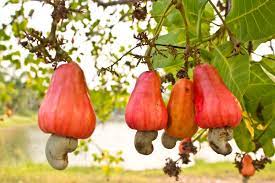
Effective Pest Management in Cashew Orchards
Share
Introduction
Cashew, scientifically known as Anacardium occidentalis, is not only a valuable cash crop but also vulnerable to various pests that can significantly impact its yield and quality.
Effective pest management is crucial to maintain healthy orchards and maximize productivity.
In this blog post, we'll explore some common pests affecting cashew trees and sustainable strategies to manage them

Common Pests Affecting Cashew Trees
Cashew Nut Borer (Lasioderma serricorne):
Identification:
Small beetles that infest cashew nuts, causing damage and reducing their market value.

Damage:
Larvae bore into nuts, contaminating them with frass and rendering them unmarketable.
Management:
Use pheromone traps to monitor and reduce adult populations. Proper sanitation and timely harvesting also help minimize infestations.
Tea Mosquito Bug (Helopeltis spp.):
Identification:
Small bugs that suck sap from young shoots and developing nuts.

Damage:
Feeding leads to deformed nuts and can reduce yield and quality.
Management:
Regular scouting and use of botanical insecticides like neem oil can effectively control populations. Introducing natural enemies like predatory bugs can also aid in managing infestations.
Fruit Flies:
Identification:
Various species like Bactrocera spp. that lay eggs in developing fruits.

Damage:
Larvae feed inside the fruit, causing premature drop and reducing marketable yield .
Management:
Traps baited with fruit attractants can help monitor and reduce fly populations. Cultural practices such as timely harvesting and sanitation are crucial.
Sustainable Pest Management Strategies
Integrated Pest Management (IPM):
Implementing a holistic approach that combines cultural, biological, and chemical control methods.
Cultural Practices: Pruning, sanitation, and proper orchard hygiene to reduce pest habitats and enhance tree vigor.
Biological Control: Introducing natural enemies like parasitic wasps and predatory insects to prey on pest populations.
Chemical Control: Judicious use of pesticides, adhering strictly to recommended doses and application timings to minimize environmental impact.
Monitoring and Early Detection:
Regular monitoring of orchards for pest populations and damage symptoms.
Setting up pheromone traps and using sticky traps to assess pest levels.

Early detection allows for timely intervention, preventing pest outbreaks and minimizingeconomic losses.
Responsible Pesticide Use:
Selecting pesticides that are effective against target pests while being least harmful to beneficial organisms and the environment.
Following recommended application practices, including safety precautions andproper disposal of pesticide containers.
Conclusion
Effective pest management in cashew orchards is essential for sustaining high yields and ensuring the profitability of growers.
By integrating various pest control strategies and adopting sustainable practices, farmers can minimize reliance on pesticides, protect natural ecosystems, and produce high-quality cashew nuts.
Continuous research and adaptation of best practices will further enhance the resilience of cashew orchards against pests, contributing to a thriving agricultural sector.
